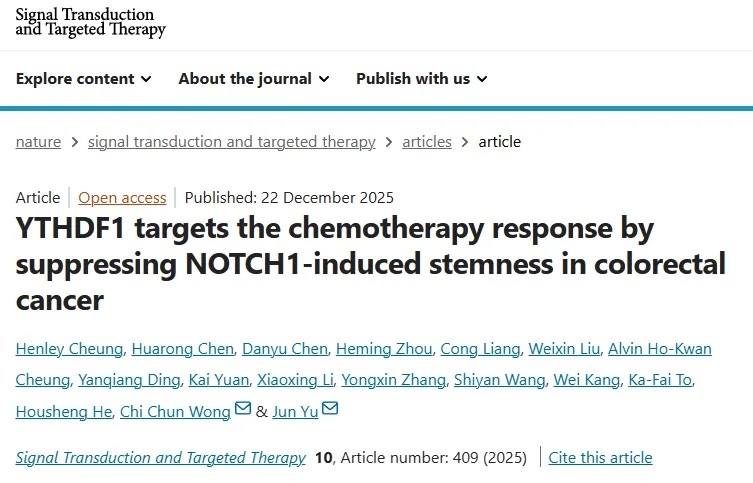Nat Genet:发现慢性肾衰竭与FAN1基因突变相关联
| 导读 | <p align="center"><img src="http://www.bioon.com/biology/UploadFiles/201208/2012081100314094.jpg" alt="" width="260" height="263" border=&quo... |
<p align="center"><img src="http://www.bioon.com/biology/UploadFiles/201208/2012081100314094.jpg" alt="" width="260" height="263" border="0" /></p>
在一项新研究中,研究人员发现一个基因突变与慢性肾衰竭(chronic kidney failure)存在关联。他们发现患有一种特定类型肾病---巨核间质肾病(karyomegalic interstitial nephritis, KIN)的病人很可能在一种被称作FAN1的特定基因上发生突变。基因FAN1编码一种有助修补DNA损伤的蛋白。美国洛克菲勒大学助理教授Agata Smogorzewska和同事们提供证据证实基因FAN1突变和这种疾病之间存在因果关系。
<!--more-->
在这项新研究中,研究人员研究了基因FNA1突变是否肾病存在因果关系。在一项测试中,他们从病人体内提取细胞,让这些细胞接触一种经常被用于化疗治疗的药物,即丝裂霉素C(mitomycin C)。丝裂霉素C导致DNA发生交联,即双螺旋DNA双链结合在一起以至于它们不能够被分开,从而使得它们不能够复制和产生新的细胞。已知FAN1修复这种DNA损伤。在实验室中,研究人员在这种药物的存在下研究了病人的细胞,他们观察到大量的DNA损伤,这意味着在这些病人的细胞中,FNA1不能正确地发挥作用。当把校正后的FAN1基因导入这些细胞时,它们能够恢复修复这种交联损伤的能力。
尽管研究人员发现DNA损伤与肾衰竭存在关联,但是人们仍然需要更多了解这种关联。最初是什么导致这种DNA损伤,同时让携带这种突变基因的病人不能修复它?为什么这种损伤会影响肾脏但是不对其他器官产生影响?Smogorzewska实验室如今正在努力解答这些问题。
本文编译自<a href="http://medicalxpress.com/news/2012-08-collaboration-kidney-disease-tied-dna.html">Collaboration finds kidney disease tied to DNA damage</a>
<div id="ztload">
<div> </div>
<div>
<div>
<img src="http://www.bioon.com/biology/UploadFiles/201208/2012080622254305.gif" alt="" width="113" height="149" border="0" />
<a title="" href="http://dx.doi.org/10.1038/ng.2347" target="_blank">doi: 10.1038/ng.2347</a>
PMC:
PMID:
</div>
<div>
<br/><strong>FAN1 mutations cause karyomegalic interstitial nephritis, linking chronic kidney failure to defective DNA damage repair</strong><br/>
Weibin Zhou, Edgar A Otto, Andrew Cluckey, Rannar Airik, Toby W Hurd, Moumita Chaki, Katrina Diaz, Francis P Lach, Geoffrey R Bennett, Heon Yung Gee, Amiya K Ghosh, Sivakumar Natarajan, Supawat Thongthip, Uma Veturi, Susan J Allen, Sabine Janssen, Gokul Ramaswami, Joanne Dixon, Felix Burkhalter, Martin Spoendlin, Holger Moch, Michael J Mihatsch, Jerome Verine, Richard Reade, Hany Soliman et al.
Chronic kidney disease (CKD) represents a major health burden1. Its central feature of renal fibrosis is not well understood. By exome sequencing, we identified mutations in FAN1 as a cause of karyomegalic interstitial nephritis (KIN), a disorder that serves as a model for renal fibrosis. Renal histology in KIN is indistinguishable from that of nephronophthisis, except for the presence of karyomegaly2. The FAN1 protein has nuclease activity and acts in DNA interstrand cross-link (ICL) repair within the Fanconi anemia DNA damage response (DDR) pathway3, 4, 5, 6. We show that cells from individuals with FAN1 mutations have sensitivity to the ICL-inducing agent mitomycin C but do not exhibit chromosome breakage or cell cycle arrest after diepoxybutane treatment, unlike cells from individuals with Fanconi anemia. We complemented ICL sensitivity with wild-type FAN1 but not with cDNA having mutations found in individuals with KIN. Depletion of fan1 in zebrafish caused increased DDR, apoptosis and kidney cysts. Our findings implicate susceptibility to environmental genotoxins and inadequate DNA repair as novel mechanisms contributing to renal fibrosis and CKD.
<br/>来源:生物谷
</div>
</div>
</div>
在一项新研究中,研究人员发现一个基因突变与慢性肾衰竭(chronic kidney failure)存在关联。他们发现患有一种特定类型肾病---巨核间质肾病(karyomegalic interstitial nephritis, KIN)的病人很可能在一种被称作FAN1的特定基因上发生突变。基因FAN1编码一种有助修补DNA损伤的蛋白。美国洛克菲勒大学助理教授Agata Smogorzewska和同事们提供证据证实基因FAN1突变和这种疾病之间存在因果关系。
<!--more-->
在这项新研究中,研究人员研究了基因FNA1突变是否肾病存在因果关系。在一项测试中,他们从病人体内提取细胞,让这些细胞接触一种经常被用于化疗治疗的药物,即丝裂霉素C(mitomycin C)。丝裂霉素C导致DNA发生交联,即双螺旋DNA双链结合在一起以至于它们不能够被分开,从而使得它们不能够复制和产生新的细胞。已知FAN1修复这种DNA损伤。在实验室中,研究人员在这种药物的存在下研究了病人的细胞,他们观察到大量的DNA损伤,这意味着在这些病人的细胞中,FNA1不能正确地发挥作用。当把校正后的FAN1基因导入这些细胞时,它们能够恢复修复这种交联损伤的能力。
尽管研究人员发现DNA损伤与肾衰竭存在关联,但是人们仍然需要更多了解这种关联。最初是什么导致这种DNA损伤,同时让携带这种突变基因的病人不能修复它?为什么这种损伤会影响肾脏但是不对其他器官产生影响?Smogorzewska实验室如今正在努力解答这些问题。
本文编译自<a href="http://medicalxpress.com/news/2012-08-collaboration-kidney-disease-tied-dna.html">Collaboration finds kidney disease tied to DNA damage</a>
<div id="ztload">
<div> </div>
<div>
<div>
<img src="http://www.bioon.com/biology/UploadFiles/201208/2012080622254305.gif" alt="" width="113" height="149" border="0" />
<a title="" href="http://dx.doi.org/10.1038/ng.2347" target="_blank">doi: 10.1038/ng.2347</a>
PMC:
PMID:
</div>
<div>
<br/><strong>FAN1 mutations cause karyomegalic interstitial nephritis, linking chronic kidney failure to defective DNA damage repair</strong><br/>
Weibin Zhou, Edgar A Otto, Andrew Cluckey, Rannar Airik, Toby W Hurd, Moumita Chaki, Katrina Diaz, Francis P Lach, Geoffrey R Bennett, Heon Yung Gee, Amiya K Ghosh, Sivakumar Natarajan, Supawat Thongthip, Uma Veturi, Susan J Allen, Sabine Janssen, Gokul Ramaswami, Joanne Dixon, Felix Burkhalter, Martin Spoendlin, Holger Moch, Michael J Mihatsch, Jerome Verine, Richard Reade, Hany Soliman et al.
Chronic kidney disease (CKD) represents a major health burden1. Its central feature of renal fibrosis is not well understood. By exome sequencing, we identified mutations in FAN1 as a cause of karyomegalic interstitial nephritis (KIN), a disorder that serves as a model for renal fibrosis. Renal histology in KIN is indistinguishable from that of nephronophthisis, except for the presence of karyomegaly2. The FAN1 protein has nuclease activity and acts in DNA interstrand cross-link (ICL) repair within the Fanconi anemia DNA damage response (DDR) pathway3, 4, 5, 6. We show that cells from individuals with FAN1 mutations have sensitivity to the ICL-inducing agent mitomycin C but do not exhibit chromosome breakage or cell cycle arrest after diepoxybutane treatment, unlike cells from individuals with Fanconi anemia. We complemented ICL sensitivity with wild-type FAN1 but not with cDNA having mutations found in individuals with KIN. Depletion of fan1 in zebrafish caused increased DDR, apoptosis and kidney cysts. Our findings implicate susceptibility to environmental genotoxins and inadequate DNA repair as novel mechanisms contributing to renal fibrosis and CKD.
<br/>来源:生物谷
</div>
</div>
</div>
 腾讯登录
腾讯登录
还没有人评论,赶快抢个沙发